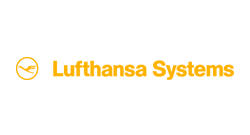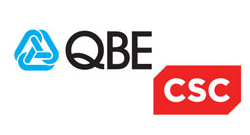How to Unlock More Benefits From Your Managed File Transfer Solution
Managed File Transfer platforms and business to business gateways have been working to help companies securely transfer information between applications, systems and people for decades.
Originally deployed to consolidate file transfers to one central server, the use of MFT has evolved over time. Now, it can typically be found facilitating the transfer of files to trading partners or automating processes, monitoring folders and moving files based on activity or schedule -often in just one area of the business.
However, with the increasing digitalisation of business, the evolution of cloud-based services and a growing dependency on data, it’s not uncommon to find MFT deployments falling short of their potential.
In addition to this wasted opportunity to derive valuable business benefits, business to business integration (B2Bi) platforms have begun to evolve. They’ve progressed from B2B gateways, now giving businesses heightened management and control of integrated applications and processes. The brittle and fragile gateways that once facilitated point-to-point connections are legacy, as are the Value-Added Networks which only focused on connectivity.
The evolution of Managed File Transfer
So, with this evolved state of deployment, and the changes to MFT platforms, maybe it’s time to rethink how you are using your Managed File Transfer platform.
Are you really unlocking its true value, or are you sitting on a tool that could, with some consideration, streamline essential business practices, secure critical data and save man hours across your business?
By ensuring all business areas know about the availability and potential capabilities of MFT, it’s possible that other user groups may identify ways to streamline their day to day processes and unlock greater levels of efficiency. It could even improve the way data is transferred around your business. MFT offers increased security and improved visibility over email and cloud sharing solutions, as well as greater reliability for large-scale transfers.
For those businesses already using MFT solutions to streamline workflow across the organisation, there’s still opportunity to improve the return on your MFT investment. By analysing its configuration, it may be possible to identify opportunities to enhance performance. For example, could load balancing lead to faster and more robust transfers?
Then there’s integration. Once your data file has been safely transported from A to B, what happens to it?
You see, B2Bi isn’t just about transferring data from one partner to another, integration is about connecting the processes that power your business.
It’s unlikely that the original purpose of moving the data file was for it to sit there, so how was the data destined to be used? By integrating with other applications, or even just converting the file type, could your MFT be working harder to transfer your data seamlessly to a usable state, and simplify your existing workflow?
It’s these integrated processes, particularly the real-time and “just-in-time” ones, that can really unleash the power of your data in a manner that more traditional ETL processes cannot.
Of course, each industry derives different benefits from B2B integration (B2Bi). Some of these are clear from the outset, but other industries take longer to recognise integration’s true potential. In short, the more closely regulated the industry, the greater the value that can be derived from integration.
B2Bi – an Industry View
An example of an industry where the value of B2B integration is measurable and instantly recognisable is Financial Services. Already in a state of flux, The Financial Services industry is wrestling with the challenge of a whole raft of changes:
- Evolved MFT solutions that have developed into siloed business solutions
- Competition from modern, innovative digital-only banks (who’ve taken advantage of the cloud, APIs and integration)
- Alternative lending from non-traditional competitors
- Open banking mandates
- Blockchain technology for distributed transactions, governance and investment
- The growth of challenger brands who may be seen as having “first mover advantage”
- The impact of bots and artificial intelligence.
Team this with an avalanche of new legislation and regulations, and there’s plenty of scope for proving the value of B2B integration beyond optimising opportunity across the business.
How B2Bi is Enhancing the Value of Data
The ability to correlate multiple transactions between sets of partners and applications allows companies to establish and determine relationships (i.e. purchase orders, acknowledgements, shipping notices, invoices and payments) useful in service level agreement compliance, issue resolution and streamlining workflow. The contextualisation of data also enables businesses to see strategic insights that assist in resource planning, logistics planning and revenue forecasting.
It’s for this reason that every industry, without exception, will find a reason to celebrate B2Bi, as the value delivered by contextualised data derived from the integration is high, regardless of the nature of your business.
HANDD has a team of managed file transfer specialists available to advise you on the best way that you can unleash the full potential of your MFT solution and deliver more for your business, so if you’d like to discuss how your business can use MFT to save money, reduce complexity and minimise man hours, or if you needs support finding the right MFT solution for you, call us on +44 (0) 845 643 4063.
































